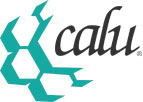There are two articles in this latest edition of CALU Report. In the first article, “Budget 2018 – New Draft Legislation Released”, Kevin Wark summarizes the July 27, 2018, draft legislation governing tax reporting for trusts and a new allocation rule applicable to the eligible RDTOH and non-eligible RDTOH accounts.
- On July 27, 2018 the Department of Finance (“Finance Canada”) released for public consultation draft legislative proposals relating to income tax measures announced in Budget 2018 that have not yet been enacted, as well as other rules consequential on the enactment of the eligible refundable dividend tax on hand (RDTOH) and non-eligible RDTOH accounts. This article will summarize the legislation governing tax reporting for trusts and a new allocation rule applicable to the eligible RDTOH and non-eligible RDTOH
accounts.
In late 2017 U.S. President Donald Trump signed the Tax Cuts and Jobs Act into law. In the article “Impact of U.S. Tax Reform on Cross-Border Planning” Azam Rajan focuses at a high-level on the more significant changes from a cross-border planning perspective and highlights issues for Canadian and U.S. individual’s resident in Canada, and Canadian business owners, to think about going forward.
- President Donald Trump signed the Tax Cuts and Jobs Act of 2017, P.L. 115-97, (interchangeably, “TCJA” or “Act”) into law a mere 50 days after the bill was introduced on the House floor as H.R. 1.1 As context, the comprehensive tax reforms enacted in 1986 took more than two years to negotiate before it was signed into law, and the Treasury department was still issuing guidance on that legislation in 2017. From a cross-border investment perspective, the Act provides Canadian entrepreneurs much food for thought when deciding whether to invest in Canada or expand into the United States. Indeed, a flat 21% corporate tax rate, the ability to immediately expense new and used business assets, and special deductions based on a company’s foreign derived intangible income, makes the United States an attractive place for Canadians to grow their business. On this side of the border, the Liberal government released its 2018 budget which was touted as a budget that will put Canadians to work, as well as make Canada more innovative and globally competitive. However, it did little to address the competitiveness of the Canadian tax system in light of tax reforms in the United States. This article will focus at a high-level on the more significant changes from a -border perspective and highlight issues for Canadian and U.S. individual’s resident in Canada, and Canadian business owners, to think about going forward.
(Members only)




